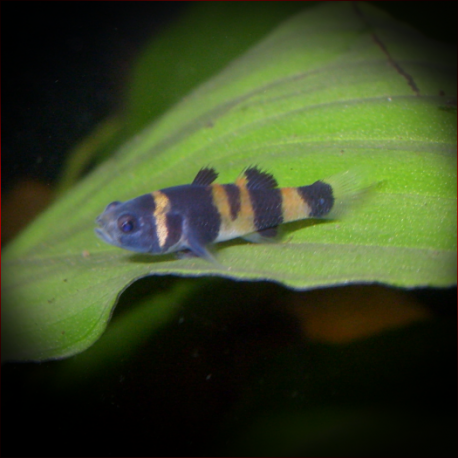More info
Datasheet
| Minimum Tank Size | 40 litres / 10.57 US gallons |
| Maximum Size | 1.8cm / 0.71inches |
General Description
The Kabili Bumblebee Goby, scientifically known as Brachygobius Kabiliensis, belongs to the Gobiidae family within the Perciformes order. This species has a maximum size of 1.8cm and is commonly found in both fresh and brackish water habitats in lowland coastal environments, such as mangrove swamps and estuaries. It has a distinct appearance with specific characteristics that differentiate it from similar species like B. doriae and B. sabanus.
Aquarium Setup
For optimal care of the Kabili Bumblebee Goby, a tank size of at least 40 litres is recommended. The setup should include plenty of hiding spots and cover to mimic its natural habitat. These gobies prefer harder water conditions compared to other species. Adding crushed coral or marine salt to the substrate can help maintain water parameters, with a suggestion of around 2 grams of marine salt per litre. Gentle filtration using an air-powered sponge-type unit is ideal in the aquarium setup for this species.
Behaviour
The Kabili Bumblebee Goby is known to be unsuitable for community tanks and is best housed in a setup specific to its species. These gobies tend to be territorial and may exhibit aggressive behavior towards other tank mates. Providing ample hiding spaces can help reduce stress and aggression among individuals.
Feeding and Diet
In the wild, Kabili Bumblebee Gobies primarily feed on small live foods like Artemia and Daphnia. While some specimens may learn to accept frozen alternatives, they generally ignore dried food products. Offering a varied diet rich in live foods is essential for the optimal health and nutrition of these gobies in captivity.
Reproduction & Dimorphism
The reproduction habits and dimorphic features of the Kabili Bumblebee Goby are not extensively documented. However, like other species within the Brachygobius genus, they are likely to exhibit unique reproductive behaviors and possibly subtle physical differences between males and females.
Habitat and Distribution
The distribution of B. kabiliensis spans various locations including the Kabili River in Malaysia, parts of Brunei Darussalam, Singapore, and the lower Mekong River basin in Vietnam and Cambodia. Their habitats consist of substrates composed of mud, sand, silt, and organic materials like leaf litter and mangrove roots, typically found in mangrove swamps, estuaries, and tidal streams.

